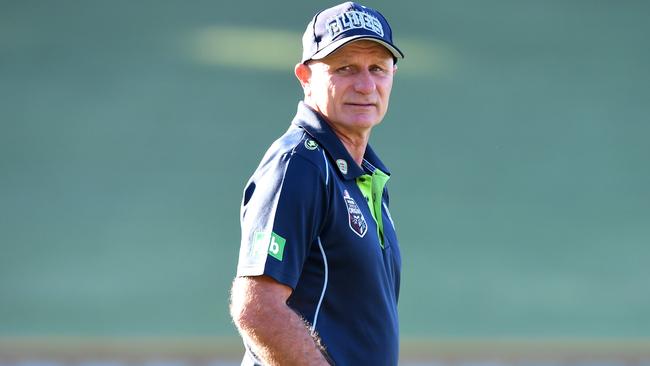Rugby league legend Peter Sterling pledges brain to science to help CTE research
Peter Sterling will donate his brain for research into the impact of head knocks in rugby league.

Parramatta legend Peter Sterling has offered his brain to science in the wake of revelations that Chronic Traumatic Encephalopathy or CTE — the brain disease linked with repetitive head injury and most widely associated with the NFL in America — has been found in two former players.
Sterling, speaking on Macquarie Sports radio this afternoon, confirmed he had offered his brain to further research into the impact of head knocks in rugby league.
“This has been an ongoing concern as we learn more in the future. I’ve said yes to donating my brain to science in the future and I believe it is going to help players in the years to come,” Sterling said on Halftime with James Willis.
“I’m not scared but I am concerned. The decision to donate my brain was a decision not taken lightly but I think it’s important that something like that can help so that we know more and we can take the appropriate steps as that knowledge becomes readily available.”
Sterling backed the NRL’s current handling of the issue — the game has brought in strict protocols around head knocks and return to play.
“The rules that the NRL have put in place was a stand that they needed to make, as a welfare issue for the players, and to err on the side of caution,” Sterling said.
“The NRL were doing the right thing by their players and legally as well so that we don’t go down the same route as the NFL, so, fortunately, those protocols have changed.”
The findings in relation to two former players were published today in international neuropathology journal Acta Neuropathologica Communications.
“The changes in the two brains were distinctive, definitive, and met consensus diagnostic criteria for CTE,” said lead author clinical associate professor Michael Buckland, head of the RPA Neuropathology Department and Head of the Molecular Neuropathology Program at the Brain and Mind Centre.
“I have looked at about 1000 brains over the last 10 years, and I have not seen this sort of pathology in any other case before.
“The fact that we have now seen these changes in former rugby league players indicates that they, and likely other Australian collision sports players, are not immune to CTE, a disease that has gained such high profile in the United States.”
The two cases have been published as de-identified case reports, and no further details of the players involved are available, other than they both played more than 150 first grade games in the NRL.
CTE was first described more than 100 years ago in boxers and was originally called punch-drunk syndrome. In younger people, it often presents with behavioural and/or mood disturbances such as depression, while symptom onset in older people may be indistinguishable from Alzheimer disease.
CTE can only be diagnosed confidently by examination of the brain after death. The only known risk factor for CTE is repetitive head injuries, such as concussions, and blows that do not cause signs or symptoms, known as sub-concussive impacts.
CTE has been found in the brains of former players of American Football, ice-hockey, soccer, rugby union, and others exposed to repeated head injury.
The only previous case identified in an Australian sportsperson was that of Barry ‘Tizza’ Taylor, a rugby union player and coach, whose brain was sent to Boston for analysis in 2013.



